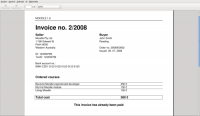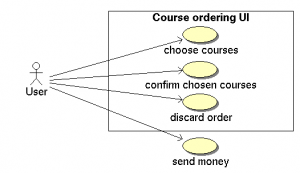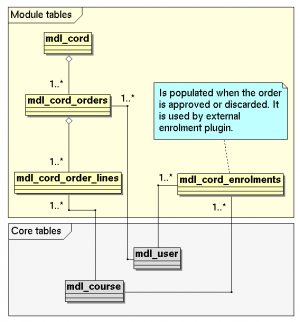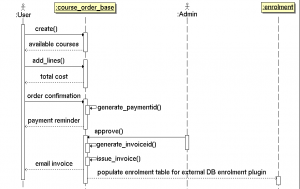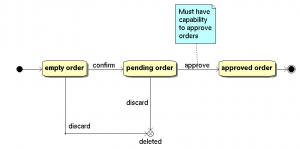Course ordering and invoicing
The module allows authenticated users to fill course enrolment order form. Payment reminder is sent automatically. Administrator has to manually approve the order, eg. according to a bank account listings. After approving the order, the invoice is emailed to the users.
The module uses External database enrolment plugin. It may be useful for sites where users must pay to be enrolled into a course but for some reasons, PayPal and other plugins can not be used.
The module was created and is currently maintained by David Mudrak.
Screenshots
Installation
The source codes live in CVS contrib/plugins/mod/cord. To checkout the module, go to the Moodle mod/ directory and use:
cvs -z3 -d:ext:myusername@cvs.moodle.org:/cvsroot/moodle co -d cord contrib/plugins/mod/cord
TODO: how to setup the module - the outline follows
- set up external DB enrolment
- create an instance of the module
- override desired roles - allow them to order courses (mod/cord:ordercourse)
- set up the cost of the courses
How to customize the invoice
TODO
How to report a bug
Please, use Tracker. Course ordering if one of the components in "Non-core contributed modules" project. See the list of tracked issues at http://tracker.moodle.org/browse/CONTRIB/component/10327.
Capabilities
| Capability | Description | Status |
|---|---|---|
| mod/cord:ordercourse | a user can submit course ordering form | implemented |
| mod/cord:manageorders | a user can approve or delete submitted orders | implemented |
UML diagrams


